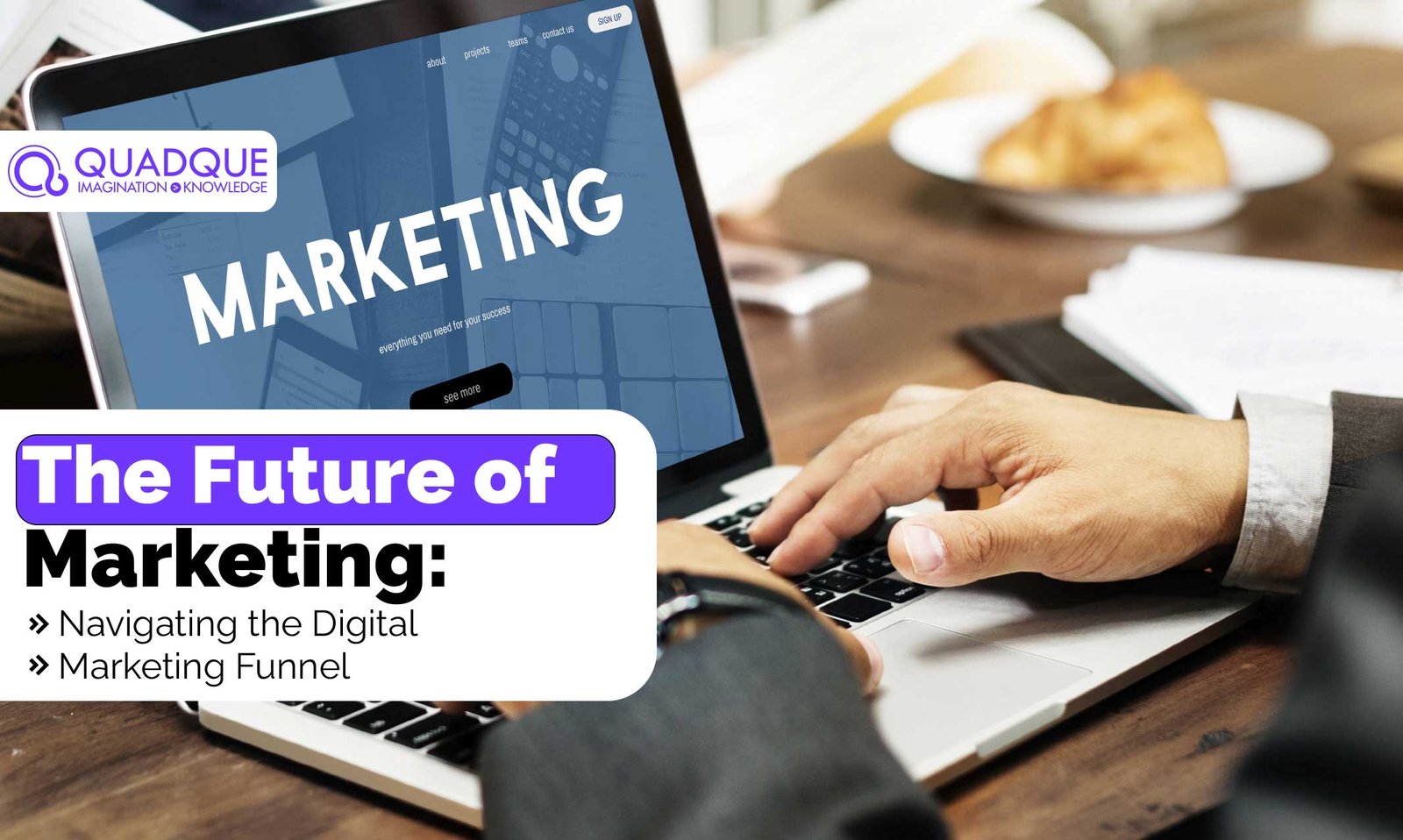
Unlocking the Guide to the Digital Marketing Funnel
In the ever-evolving realm of marketing, the digital landscape presents both challenges and opportunities. As an expert in vocational training provider, I’ve witnessed firsthand the transformative power of digital marketing in driving business growth and success. In this comprehensive guide, we’ll embark on a journey through the digital marketing funnel, exploring strategies and tactics to navigate each stage and seize opportunities for future success.
- Understanding the Digital Marketing Funnel
The digital marketing funnel serves as a roadmap for guiding potential customers through various stages of the buyer’s journey, from awareness to conversion. Just as a skilled navigator charts a course through turbulent waters, marketers must understand each stage of the funnel and tailor their strategies accordingly.
At the top of the funnel lies the awareness stage, where potential customers become acquainted with a brand or product. Moving down the funnel, the consideration stage involves nurturing leads and providing valuable information to guide their decision-making process. Finally, the conversion stage entails converting leads into customers through targeted campaigns and compelling offers.
- Leveraging Online Marketing Channels
Online marketing encompasses a wide array of channels and tactics, each offering unique opportunities to reach and engage target audiences. From social media promotion to search engine optimization (SEO) and pay-per-click (PPC) advertising, marketers must leverage a mix of channels to maximize their reach and impact.
For example, a clothing retailer may utilize social media platforms like Instagram and Facebook to showcase new arrivals and engage with customers through visually appealing content. By combining organic and paid strategies, the retailer can amplify its brand message and drive traffic to its online store.
- Crafting Compelling Content Marketing Strategies
Content marketing lies at the heart of the digital marketing funnel, offering valuable resources and information to attract and retain customers. Just as a master storyteller captivates audiences with engaging narratives, marketers must craft compelling content that resonates with their target audience’s interests and needs.
For instance, a software company may produce blog posts, tutorials, and whitepapers that address common pain points faced by its target market. By providing informative and relevant content, the company establishes itself as a trusted authority in its industry and nurtures leads throughout the buyer’s journey.
- Optimizing Website Performance and User Experience
A well-optimized website serves as the cornerstone of a successful digital marketing strategy, providing a centralized hub for engaging with potential customers. From mobile optimization to intuitive navigation and fast loading times, every aspect of website design and functionality contributes to the overall user experience.
Consider the analogy of a storefront in a bustling shopping district; just as a well-designed storefront attracts foot traffic and encourages browsing, a well-optimized website attracts visitors and guides them towards conversion. By investing in website optimization, businesses can create seamless and immersive experiences that drive engagement and conversions.
- Harnessing the Power of Data-Driven Marketing
Data-driven marketing empowers marketers to make informed decisions based on insights gleaned from analytics and customer behavior. By analyzing key metrics such as website traffic, conversion rates, and customer demographics, marketers can identify trends and patterns that inform their strategies.
For example, an e-commerce retailer may use web analytics to track user interactions and identify areas for improvement in the online shopping experience. By leveraging data-driven insights, the retailer can optimize its website layout, product offerings, and marketing campaigns to better meet the needs and preferences of its target audience.
- Embracing Marketing Automation
Marketing automation streamlines repetitive tasks and workflows, allowing marketers to focus on strategic initiatives and personalized engagement. From email campaigns to lead nurturing sequences, automation tools enable businesses to deliver timely and relevant messages to their audience at scale.
Imagine a skilled assistant managing communication channels and coordinating outreach efforts; similarly, marketing automation tools handle routine tasks such as email scheduling, social media posting, and lead scoring, freeing up valuable time for marketers to focus on creative strategy and campaign optimization.
- Cultivating Customer Engagement and Loyalty
In a competitive digital landscape, fostering ongoing engagement and loyalty is essential for long-term success. By nurturing relationships with existing customers and providing exceptional customer experiences, businesses can turn one-time buyers into loyal brand advocates.
For instance, a subscription-based service may offer exclusive perks and rewards to its loyal subscribers, incentivizing continued engagement and retention. By prioritizing customer satisfaction and loyalty, businesses can build a community of brand advocates who actively promote their products and services to others.
- Embracing Video Marketing
Video has emerged as a dominant force in digital marketing, offering unparalleled opportunities for storytelling and engagement. From captivating brand stories to informative product demonstrations, video content captures audience attention and drives meaningful interactions.
For example, a cosmetics company may produce makeup tutorials and beauty tips videos, showcasing its products in action while providing valuable insights to viewers. By leveraging video marketing, businesses can forge deeper connections with their audience and increase brand visibility across digital channels.
- Exploring the Potential of Influencer Marketing
Influencer marketing harnesses the influence and reach of social media personalities to promote products and services to their dedicated followers. By partnering with influencers whose values align with their brand, businesses can tap into niche audiences and enhance their credibility.
Consider the example of a fitness apparel brand collaborating with fitness influencers to showcase their latest activewear collections. Through authentic endorsements and user-generated content, the brand can reach fitness enthusiasts and drive conversions through trusted recommendations.
- Optimizing for Mobile Marketing
With the proliferation of smartphones and mobile devices, mobile marketing has become indispensable for reaching on-the-go consumers. From mobile-responsive websites to location-based targeting and SMS campaigns, mobile marketing strategies cater to the unique preferences and behaviors of mobile users.
Imagine a digital storefront accessible anytime, anywhere; similarly, mobile marketing initiatives enable businesses to connect with consumers in the palm of their hand, delivering personalized experiences and driving engagement.
- Harnessing the Power of Search Engine Marketing (SEM)
Search engine marketing encompasses both SEO and paid advertising strategies to increase visibility and drive traffic from search engine results pages. By optimizing website content for relevant keywords and bidding on targeted search terms, businesses can attract qualified leads actively searching for their products or services.
For instance, a travel agency may run PPC ads targeting users searching for vacation packages or destination guides. By appearing at the top of search results, the agency can increase brand visibility and capture valuable leads at the moment of intent.
- Integrating Digital Branding Strategies
Digital branding goes beyond logos and color schemes to encompass the overall perception and reputation of a brand in the digital space. By consistently delivering on brand promises and values across all digital touchpoints, businesses can strengthen brand identity and foster trust with their audience.
Consider the analogy of a well-crafted signature; just as a signature represents an individual’s identity and values, digital branding communicates a brand’s unique identity and value proposition to consumers. Through cohesive branding elements and storytelling, businesses can leave a lasting impression and differentiate themselves in a crowded marketplace.
Conclusion
In navigating the digital marketing funnel, businesses must embrace a holistic approach that integrates diverse strategies and channels to engage and convert potential customers. By leveraging the power of video marketing, influencer partnerships, mobile optimization, SEM, and digital branding, businesses can create compelling experiences that resonate with their audience and drive meaningful results. Just as a skilled navigator charts a course through changing tides and currents, strategic marketing initiatives guide businesses towards their objectives in the dynamic digital landscape, ensuring success and longevity in the ever-evolving marketplace.
Recent Posts
- Sustainable Graphic Design for 2024 and Beyond
- Profit Power: Maximizing Revenue Growth with CRM Software
- Medical and Elderly Care in the UK: Strategies for Sustainable Growth
- Securing Educational Excellence: IT Support for the Digital Era
- Tech Transformation: The Untold Story of Bangladesh’s Innovation Hub
Recent Comments
Latest Post
Categories
- AI
- Biometric
- Blockchain
- Cloud Computing
- CRM
- custom software
- Cybersecurity
- Data Analysis
- Datacenter Management
- Designer
- Digital Marketing
- Education
- health care
- Informative
- ISP Management
- IT Procurement
- IT Recruitment
- IT Support
- Mobile App
- Network Management
- Robotics Landscape
- SAP ERP
- SEO
- Structured Cabling
- Tech Australia
- Tech bangladesh
- Technology
- tourism
- Uncategorized
- Web Development


